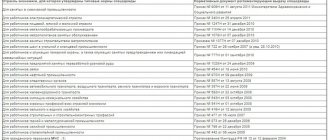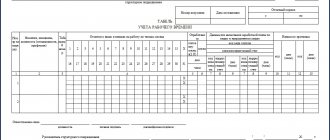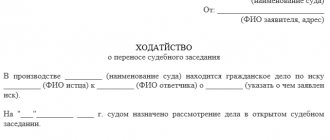If you incorrectly indicate the expiration date in the Mercury system, the product may be considered expired. This will result in a block in the system or a fine. We'll tell you how a manufacturer can fill out the expiration date field without errors, and how suppliers and retailers can interpret it correctly.
The Mercury system has a “Best Before” field, which indicates the expiration date. Manufacturers fill it out when completing the production VSD. Suppliers and retailers check this field upon receipt or shipment.
If you issue an IRR for a batch of goods with an expired expiration date or pay off an IRR for arrears, the system will consider this a critical error. For this, you can get a block in the Mercury GIS for up to 6 months, cancellation of registration or a fine: up to 50 thousand rubles for individual entrepreneurs and up to 700 thousand rubles for organizations. An exception is registration of VSD for the purpose of disposal or recycling.
Initially, Rosselkhoznadzor did not explain how to interpret and fill out the “Best before” field, so users had discrepancies. We sent a request to the central office of Rosselkhoznadzor and found out the answers to these questions.
Rosselkhoznadzor's response
Rosselkhoznadzor has deciphered how to set expiration dates. In the “Best before” field you need to enter a date before which the products can be used and transferred to contractors. Expiration dates are not considered inclusive, therefore, with the onset of the first second of the next period, the product will be regarded as expired.
Example
We issue a VSD for a pack of cottage cheese. The “Best before” field indicates the date 05/20/2020. According to the response from Rosselkhoznadzor, the Mercury system considers this batch to be overdue as of 05/20/2020 at 00:00:00. On May 19, you can still work with the product. From the first second of May 20 it will be considered overdue.
Sometimes expiration dates are indicated by date intervals. For example, from June to July. In its response, Rosselkhoznadzor explained that in the near future it will introduce a mechanism in which goods will be considered expired upon the earliest date in the interval. Start filling out the “Best before” field in advance, taking this information into account, so that Rosselkhoznadzor does not have any questions later.
How is the shelf life of products calculated? | Velikiy Novgorod
Looking exactly at what?
Order of the MAP of the Russian Federation dated May 20, 1998 N 160 (as amended on March 11, 1999) (Registered with the Ministry of Justice of the Russian Federation on December 28, 1998 N 1669)
VI. Service life and expiration dates
(clauses 1, 2, 4, 5 of Article 5 of the Law “On the Protection
consumer rights")
In accordance with paragraph 1 of Article 5 of the Law “On the Protection of Consumer Rights,” service life is the period during which the manufacturer (executor) undertakes to provide the consumer with the opportunity to use the product (work) for its intended purpose and bear responsibility for significant deficiencies that arise through his fault.
The manufacturer (performer) is obliged to establish the service life of durable goods (work), including components (parts, assemblies, assemblies), which after a certain time may pose a danger to the life and health of the consumer, cause harm to his property or the environment.
The list of such goods (works) is approved by the Government of the Russian Federation.
For goods (work) intended for long-term use that are not included in the specified list, the manufacturer (performer) has the right to set a service life.
The manufacturer (performer) should be interested in establishing service life for goods (work) not included in the specified list, since if he does not establish such a period, then in accordance with paragraph 3 of Article 14, paragraph 5 of Article 19 and paragraph 4 of Article 29 of the Law “On the Protection of Consumer Rights” for damage caused as a result of defects in the product (work), and for the presence of significant defects in the product (work), the manufacturer (performer) will be liable for ten years from the date of transfer of the product (acceptance of the work performed) to the consumer, and if the day of transfer of the goods cannot be determined, from the date of manufacture of the goods.
Shelf life is the period after which the product (work) is considered unsuitable for its intended use.
Expiration dates are established for food products, perfumery and cosmetic products, medicines, household chemicals and similar products (work results), which after a certain time may pose a danger to the life and health of the consumer, cause harm to his property or the environment, or which During storage or use, they lose their consumer properties, as a result of which they become unsuitable for their intended use.
The list of goods (works) for which the manufacturer (performer) is obliged to establish an expiration date is approved by the Government of the Russian Federation.
Lists of goods for which the manufacturer is obliged to establish an expiration date or service life are approved by Decree of the Government of the Russian Federation of June 16, 1997 N 720 “On approval of the list of durable goods, including components (parts, assemblies, assemblies), which after a certain period may pose a danger to the life and health of the consumer, cause harm to his property or the environment and for which the manufacturer is obliged to establish a service life, and a list of goods that, after expiration of the expiration date, are considered unsuitable for their intended use”, which the work was not included .
Collection of Legislation of the Russian Federation, 1997, No. 25, Art. 2942.
In accordance with paragraph 5 of Article 5 of the Law “On Protection of Consumer Rights”, the sale of goods after the expiration of the established expiration date, as well as goods for which a service life or expiration date should be established, but is not established, is prohibited.
The obligation to establish service life for goods included in the list of durable goods, including components (parts, assemblies, assemblies), which after a certain period may pose a danger to the life and health of the consumer, cause harm to their property or the environment and for which the manufacturer is obliged to establish a service life lies with manufacturers, including foreign ones, operating on the territory of the Russian Federation and registered in the manner established by the legislation of the Russian Federation. In accordance with Article 5 of the Law “On the Protection of Consumer Rights”, these manufacturers are required to establish service life for goods included in the list from the date of entry into force of this list. The service life begins on the date of sale. The seller has the responsibility to provide the consumer with information about the service life established by the manufacturers. In this regard, the seller must ensure that such information is obtained from the above-mentioned manufacturers or from organizations that sell products from such manufacturers to him.
In cases where a foreign manufacturer is located outside the jurisdiction of the Russian Federation and the goods of such a manufacturer included in the list are not accompanied by information about their service life, the seller has the right to sell such goods to consumers without information about them. However, the seller must keep in mind that in accordance with the Civil Code of the Russian Federation (clause 2 of Article 1097) and the Law “On the Protection of Consumer Rights” (clause 3 of Article 14), liability for damage caused by defects in such a product occurs regardless of the time of its occurrence .
With regard to expiration dates, there is a ban on the sale of goods without information about the indicated dates for all goods, including imported ones. This requirement is due to the fact that after the expiration date the product is considered unsuitable for its intended use, and the shelf life begins to run in accordance with paragraph 2 of Article 19 of the Law “On Protection of Consumer Rights” from the date of manufacture. Thus, at the time of sale, a product for which there is no information about expiration dates may no longer be suitable for its intended use.
In accordance with paragraph 2 of Article 472 of the Civil Code of the Russian Federation, a product for which an expiration date has been established, the seller is obliged to transfer to the buyer in such a way that it can be used for its intended purpose before the expiration date. If a product is included in the list of goods for which expiration dates must be established, then regardless of where such a product is produced, the seller must not only convey the available information about the expiration date to the consumer, but also transfer the product before the expiration date.
How to fill out expiration dates
In the “Expiration date” field you need to enter the date until which the product is expired.
- In hours . If the last hour when the product is good is 15:00, the field is filled in in the following format: “06/26/2020:16” (DD.MM.YYYY.HH).
- In days . If the last expiration date of the product is June 25, enter “06/26/2020” (DD.MM.YYYY) in the field.
- In months . If the product is actually good in June, the field is set to “July 2020”.
- In years . If the product is actually good for the entire 2020, the field is entered “2021”.
It is important to fill out the expiration date field correctly to avoid getting blocked or fined. Contour services help with this. The web service and integration solutions of Kontur.Mercury will check for delays during acceptance and shipment. Leave a request and we will tell you in more detail about the services that will not allow you to make mistakes.
Leave a request for a consultation
Conditions for keeping finished food products
In shops
When storing food products in a store, you need to take into account their physical and chemical properties, storage conditions and periods, and sales conditions, as well as follow the rules of product proximity. According to the storage conditions of food products, they can be divided into two groups:
- Goods stored without refrigeration equipment (groceries, bakery and some flour confectionery products). Trade racks and counters are used to store them.
- Products that require low temperatures to maintain proper quality (gastronomic products, meat and fish, milk and fermented milk products, vegetables, fruits and other perishable products). In this case, refrigerated cabinets, retail racks, vegetable displays, refrigerated and freezing display cases are used.
Expiry dates of food products
As we indicated above, the above standards apply to the shelf life of any goods.
For food products, the legislation provides for special standards, which are contained in the Law of Ukraine “On the Safety and Quality of Food Products”.
In particular, according to Article 1 of this law, the term “Use before” (final date of use) is the period after the expiration of which, under any intended storage conditions, the food product is likely to not have the quality indicators usually expected by consumers and is not considered suitable for implementation.
That is, in practice, the date indicated on the food label after the words “Use By” is the last date on which the product should be consumed. The food product becomes unsuitable from the beginning of the calendar date following the one indicated on the package.
Let's give an example. Let’s say that a food product says: consume before December 31, 2010. This means that the product can be consumed until December 31, 2010 inclusive; and from 01/01/2011 this product is unfit for consumption.
If the shelf life of the product is indicated in days, then, according to Art. 253 of the Civil Code, the period begins on the next day after the corresponding calendar date or the occurrence of the event with which its beginning is associated. Let's explain with an example.
If the production date and expiration date in days are indicated on the food product label, then the first day of the expiration date is the next calendar date after the date of production. So, if the product’s manufacturing date is January 31, 2011, then the expiration date begins to be calculated from the next day, i.e. from 02/01/2011 - this will be the first day of the expiration date.
The last day of the expiration date in this case will be the last day of the expiration date indicated on the label, taking into account the first day of the expiration date - for example, if the product’s manufacturing date is 01/31/2011, the product can be stored for no more than 5 days, then the last day of the expiration date is 02/05/2011.
In particular, the shelf life of highly perishable goods is:
- For processed meat products – up to 2 days;
- For dairy products – up to 1.5 days;
- For frozen fish – up to 2 days;
- For chilled fish – up to 1 day;
- For pastries and pies – from 1.5 to 3 days;
- For ready-made salads – up to half a day.
The shelf life of perishable products is:
- For cheeses – up to 5 days;
- For various milk formulas – up to 10 days;
- For thermally treated cottage cheese – up to 5 days;
- For boiled sausages in packaging insulating from the external environment – up to 10 days;
- For baked milk – up to 5 days.
Do not consume products that have already expired; this can be harmful and even dangerous for your health and the health of your loved ones.
Pravoved.RU 928 lawyers are now on the site
- Categories
- Consumer rights Protection
The expiration date for chips is for example March 17th. Is it the 17th inclusive, or are they considered overdue already from the 17th?
Law online - legal educational program
The shelf life of a food product is calculated from the date of manufacture and is indicated as follows:
- “implement before ... (hour, date)”;
- “implement within... (hours, days).”
The sell-by date is established for unpackaged bakery products (with the exception of pies, pies, donuts, for which an expiration date is established). ATTENTION! Recently, there have been increasing cases of detection of the sale of expired goods, without information about the date of production of the goods (which does not allow establishing the expiration date of such products), as well as food products on which sellers have remarked the production date or expiration date.
All this can pose a threat to the life and health of the population. Employees of trade enterprises who sell expired goods may be subject to administrative, and in some cases, criminal liability.
How to calculate the expiration date if the month and year are indicated
- Problematic issues of gmp: rules for assigning batch numbers and expiration dates
- Best before date
- Pharmacy reference
- Shelf life of the study drug
- When the expiration date has expired
- How to calculate the expiration date of diagnosticums if only the month and year are indicated
Problematic issues of gmp: rules for assigning a batch number and expiration date Attention of the Federal Law of January 2, 2000 No. 29-FZ “On the quality and safety of food products (as amended), expiration dates are indicated for food products, materials and products whose quality after expiration over a certain period of time from the moment of their manufacture, they deteriorate, that is, they acquire properties that pose a danger to human health, and therefore lose their suitability for their intended use.
When the expiration date has expired
These products must be updated exactly on time - once every 10 years. However, even such products have their limitations.
Among the above products are canned fish. They can be stored under certain conditions (in a cool and dark place) for no more than 2 years.
This category also includes canned vegetables, such as corn, beans, and green peas. Experts say that for 10 years you can safely consume the following products:
- salt;
- honey;
- vegetable oil;
- condensed milk;
- stew;
- jam;
- Coffee and tea;
- products that contain starch.
Complaint to the seller for low-quality food products However, the presence of such a list is not a reason to relax.
After all, all of the listed products will have to be updated every 10 years.
How long do non-perishable foods stay fresh?
Most of the products offered by the manufacturer are non-perishable, that is, they can be stored for a relatively long time.
However, no special storage conditions are specified, including temperature, humidity, etc. The only condition is to preserve the consumer properties of the products.
What is the difference between expiration date and shelf life?
Read about returns and exchanges of food products here.
How to correctly read the expiration date of products, read the link:
The following types of non-perishable products can be distinguished:
- Canned food. Their storage time is defined as the interval between the final packaging and its opening (loss of integrity);
- Flour. It should be stored in rooms with low humidity, preferably well ventilated. Depending on the type of flour and the temperature at which it is stored, the shelf life can be 2 years or even more;
- Bulk materials (salt, tea, sugar). They, subject to all conditions, can be stored for no more than 2 years;
- Dried vegetables and fruits. Their maximum shelf life, subject to temperature and humidity conditions, is 1 year;
- Vinegar, spices and herbs. For vinegar, the shelf life can be up to 1 year (if we are talking about an apple or wine product, then up to six months). For ground spices, the specified period is 3 years, for dried products – up to 4 years.
Alcohol products deserve special coverage:
- For wine, properly produced, bottled and sealed in accordance with sanitary and hygienic rules, the shelf life is practically unlimited, and can be tens of years. After opening the bottle, it is recommended to store the alcoholic product for no more than four days, since the wine, interacting with air, actively oxidizes;
- If we are talking about cognac, then the recommendations are as follows: a properly produced, packaged and stored product can be stored, like wine, for many years. In this case, the recommended storage temperature is up to 15°C. If the bottle has already been opened, it is best to drink the cognac before 2 or 3 months have passed;
- As for champagne, it is usually stored differently than the manufacturer suggests, as a result of which both physicochemical and taste properties sharply deteriorate. Thus, you should not trust the expiration date indicated on the label, which is usually 3 years, and do not purchase champagne that is older than 1 year. Due to its characteristics, it is better to drink already opened wine as soon as possible;
- Whiskey, due to its high alcohol content, can, like cognac, be stored indefinitely, however, with one condition: the room temperature should not exceed 5°C. Otherwise, although the product does not become hazardous to health, it loses its taste;
- Vodka is one of the most popular alcoholic products. Provided there are no impurities, when the drink contains only purified water and alcohol, vodka can be stored for an unlimited amount of time. However, very often the above-mentioned drink is produced with various flavoring additives, which reduce the shelf life of the product by up to 1 year. There are, among other things, currently non-mandatory GOST standards, according to which the maximum shelf life reaches 3 years. After this, of course, you can drink the drink, but, according to experts, its taste changes greatly for the worse.









